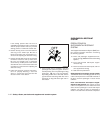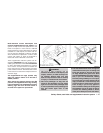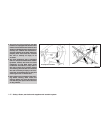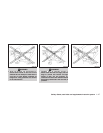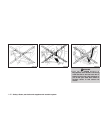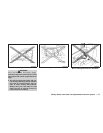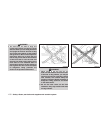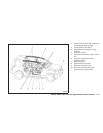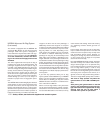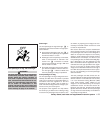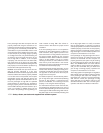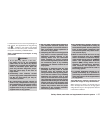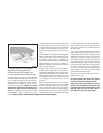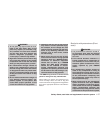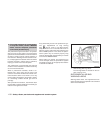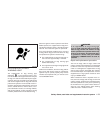NISSAN Advanced Air Bag System
(front seats)
This vehicle is equipped with the NISSAN Ad-
vanced Air Bag System for the driver and front
passenger seats. This system is designed to
meet certification requirements under U.S. regu-
lations. It is also permitted in Canada. However,
all of the information, cautions and warn-
ings in this manual still apply and must be
followed.
The driver supplemental front-impact air bag is
located in the center of the steering wheel. The
passenger supplemental front-impact air bag is
mounted in the dashboard above the glove box.
Thefront airbags aredesigned toinflate inhigher
severity frontal collisions, although they may in-
flate if the forces in another type of collision are
similarto thoseof ahigherseverity frontalimpact.
They may not inflate in certain frontal collisions.
Vehicle damage (or lack of it) is not always an
indication of proper front air bag system opera-
tion.
The NISSANAdvanced Air BagSystem has dual
stage inflators. It also monitors information from
the crash zone sensor, the Air bag Control Unit
(ACU), seat belt buckle sensors, occupant clas-
sification sensor (pressure sensor) and passen-
ger seat belt tension sensor. Inflator operation is
based on the severity of a collision and seat belt
usage for the driver. For the front passenger, it
additionally monitors the weight of an occupant
orobjecton theseatand seatbelttension.Based
oninformation fromthesensors, onlyone frontair
bag may inflate in a crash, depending on the
crash severity and whether the front occupants
are belted or unbelted. Additionally, the front
passenger air bag may be automatically turned
OFF under some conditions, depending on the
weight detected on the passenger seat and how
theseatbeltisused.If thefrontpassengerairbag
is OFF, the passenger air bag status light will be
illuminated(if theseat isunoccupied, thelight will
notbe illuminated,but theair bagwill beoff).See
“Front passenger air bag and status light”later in
this section for further details. One front air bag
inflating does not indicate improperperformance
of the system.
If you have any questions about your air bag
system, pleasecontact NISSANor your NISSAN
dealer. Ifyou areconsidering modificationof your
vehicle due to a disability, you may also contact
NISSAN. Contact information is contained in the
front of this Owner’s Manual.
When a front air bag inflates, a fairly loud noise
may be heard, followed by the release of smoke.
This smokeis notharmful anddoes notindicate a
fire.Careshouldbetakentonotinhaleit,asitmay
cause irritation and choking. Those with a history
of a breathing condition should get fresh air
promptly.
Front air bags, along with the use of seat belts,
help to cushion the impact force on the face and
chest of the front occupants. They can help save
lives and reduce serious injuries. However, an
inflating front air bag may cause facial abrasions
or other injuries. Front air bags do not provide
restraint to the lower body.
Even with NISSANadvanced air bags, seat belts
should be correctly worn and the driver and pas-
senger seated upright as far as practical away
from the steering wheel or instrument panel. The
front air bags inflate quickly in order to help
protect the front occupants. Because of this, the
forceof thefront airbag inflatingcan increasethe
risk of injury if the occupant is too close to, or is
against, the front air bag module during inflation.
The front air bags deflate quickly after a collision.
The front air bags operate only when the
ignition switch is in the ON or START posi-
tion.
After placing the ignition switch in the ON
position, the supplemental air bag warning
light illuminates. The supplemental air bag
warning light will turn off after about 7
seconds if the system is operational.
1-52 Safety—Seats, seat belts and supplemental restraint system



